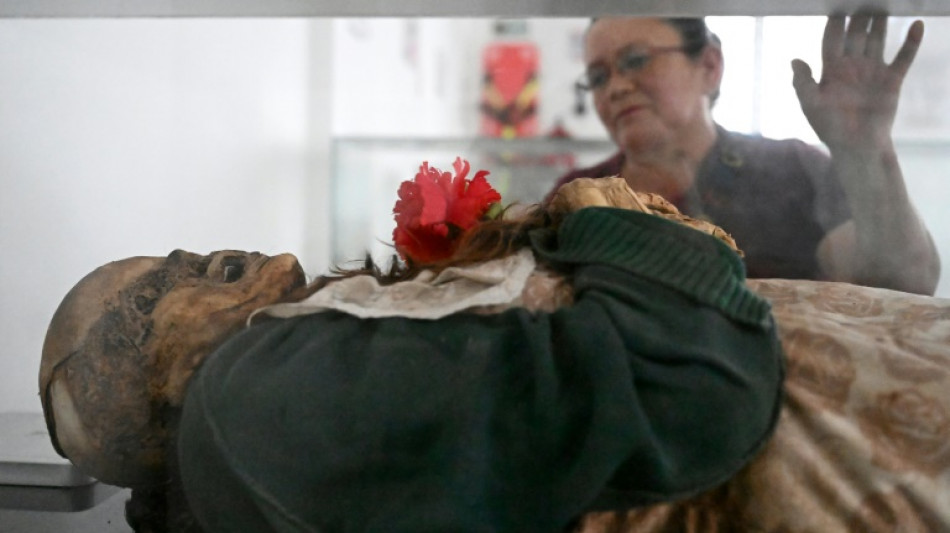
-
 Debt-saddled Laos struggles to tame rampant inflation
Debt-saddled Laos struggles to tame rampant inflation
-
India's vinyl revival finds its groove

-
 Climate finance can be hard sell, says aide to banks and PMs
Climate finance can be hard sell, says aide to banks and PMs
-
Egypt's middle class cuts costs as IMF-backed reforms take hold
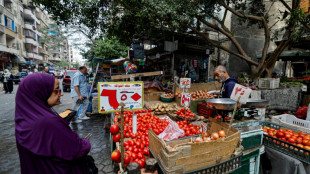
-
 Dinosaur skeleton fetches 6 million euros in Paris sale
Dinosaur skeleton fetches 6 million euros in Paris sale
-
Trump's Republican allies tread lightly on Paris pact at COP29

-
 China's Xi urges APEC unity in face of 'protectionism'
China's Xi urges APEC unity in face of 'protectionism'
-
Farmers target PM Starmer in protest against new UK tax rules

-
 UN climate chief urges G20 to spur tense COP29 negotiations
UN climate chief urges G20 to spur tense COP29 negotiations
-
Philippines warns of 'potentially catastrophic' Super Typhoon Man-yi

-
 Tens of thousands flee as Super Typhoon Man-yi nears Philippines
Tens of thousands flee as Super Typhoon Man-yi nears Philippines
-
Gabon votes on new constitution hailed by junta as 'turning point'

-
 Tens of thousands flee as Typhoon Man-yi nears Philippines
Tens of thousands flee as Typhoon Man-yi nears Philippines
-
Is Argentina's Milei on brink of leaving Paris climate accord?

-
 Fitch upgrades Argentina debt rating amid economic pain
Fitch upgrades Argentina debt rating amid economic pain
-
Trump picks Doug Burgum as energy czar in new administration

-
 At summit under Trump shadow, Xi and Biden signal turbulence ahead
At summit under Trump shadow, Xi and Biden signal turbulence ahead
-
Xi warns against 'protectionism' at APEC summit under Trump cloud

-
 Xi, Biden at Asia-Pacific summit under Trump trade war cloud
Xi, Biden at Asia-Pacific summit under Trump trade war cloud
-
Leftist voices seek to be heard at Rio's G20 summit

-
 Boeing strike will hurt Ethiopian Airlines growth: CEO
Boeing strike will hurt Ethiopian Airlines growth: CEO
-
US retail sales lose steam in October after hurricanes

-
 Spate of child poisoning deaths sparks S.Africa xenophobia
Spate of child poisoning deaths sparks S.Africa xenophobia
-
Comedian Conan O'Brien to host Oscars

-
 Gore says 'absurd' to hold UN climate talks in petrostates
Gore says 'absurd' to hold UN climate talks in petrostates
-
Global stocks struggle after Fed signals slower rate cuts

-
 China tests building Moon base with lunar soil bricks
China tests building Moon base with lunar soil bricks
-
Oil execs work COP29 as NGOs slam lobbyist presence

-
 Gore says climate progress 'won't slow much' because of Trump
Gore says climate progress 'won't slow much' because of Trump
-
'Megaquake' warning hits Japan's growth

-
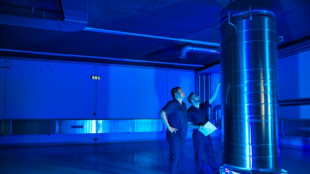 Stiff business: Berlin startup will freeze your corpse for monthly fee
Stiff business: Berlin startup will freeze your corpse for monthly fee
-
Dominican Juan Luis Guerra triumphs at 25th annual Latin Grammys

-
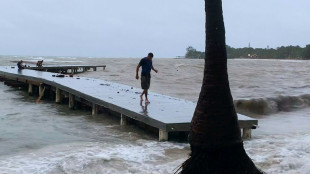 Tropical Storm Sara pounds Honduras with heavy rain
Tropical Storm Sara pounds Honduras with heavy rain
-
TikTok makes AI driven ad tool available globally

-
 Japan growth slows as new PM readies stimulus
Japan growth slows as new PM readies stimulus
-
China retail sales pick up speed, beat forecasts in October

-
 Pakistan's policies hazy as it fights smog
Pakistan's policies hazy as it fights smog
-
Mexico City youth grapple with growing housing crisis

-
 Cracks deepen in Canada's pro-immigration 'consensus'
Cracks deepen in Canada's pro-immigration 'consensus'
-
Japan's Princess Mikasa, great aunt to emperor, dies aged 101
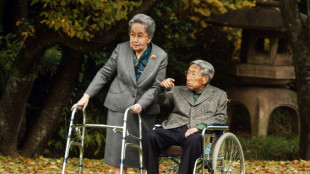
-
 Venezuela opposition activist dies in custody
Venezuela opposition activist dies in custody
-
Policymakers defend Fed independence amid concerns about Trump era

-
 Lebanon economic losses top $5 billion in year of clashes: World Bank
Lebanon economic losses top $5 billion in year of clashes: World Bank
-
Fed Chair calls US the best-performing major economy in the world

-
 Brother of late Harrods owner also accused of sexual violence: BBC
Brother of late Harrods owner also accused of sexual violence: BBC
-
New York to revive driver congestion charge plan, drawing Trump ire

-
 China's Xi arrives in Peru for APEC summit, Biden meeting
China's Xi arrives in Peru for APEC summit, Biden meeting
-
Spain's Vanguardia daily to stop posting on 'disinformation network' X

-
 New York to revive driver congestion charge plan
New York to revive driver congestion charge plan
-
US stocks wobble as traders weigh future Fed cuts


Frozen in time: Colombian town's unexplained mummies
In a small town high in the Colombian Andes, Clovisnerys Bejarano kneels before a glass box holding the petrified corpse of her mother, who died 30 years ago, but looks as if she might just be asleep.
Saturnina Torres de Bejarano is dressed in the same rose-print dress and green woolen jersey she was interred in, clasping a fake red carnation in her eerily well-preserved hands.
"She still has her little brown face, round, her braids, her hair," Bejarano, 63, told AFP at her mother's final resting place in a museum displaying her body and those of 13 others from the town of San Bernardo who became spontaneously, and mysteriously, mummified after death.
"If God wanted to preserve her... it must be for a reason," said Bejarano, a resident of the town some 100 kilometers (62 miles) south of Bogota.
Torres was interred in a vault in the San Bernardo municipal cemetery in 1993.
Exhumed in 2001 -- as is customary to make space for new bodies -- her relatives found her still with hair, nails and much of her tissue unspoilt.
It came as no major surprise. Dozens of mummified bodies have come out of the vaults since the first one in 1963.
"When all this began, people were a little incredulous about what was happening; they thought these were going to be isolated events," said museum guide Rocio Vergara.
"As time went on, it became more and more frequent to find bodies in this condition," she told AFP.
Some even still had their eyes, usually quick to decompose.
In the late 1980s, some 50 mummies were found in the mausoleum every year, but the rate has declined to a handful per year, said Vergara.
- Reward after death? -
Despite numberous attempts by experts to explain the phenomenon -- which has also been observed in countries such as Mexico and Italy -- the reason for the spontaneous mummification in San Bernardo has never been pinned down, said Vergara.
Some locals "believe "that the process (mummification) is due to the fact that the person was too good, and it is a reward after death," said Vergara.
"There are others who consider that... it is a punishment."
Most are convinced it is because of the healthy diet of the residents of temperate San Bernardo, and an active, farming lifestyle.
But this is not always borne out by the evidence: one of the mummies belongs to Jorge Armando Cruz, who spent most of his life in the big city of Bogota, where he died before being brought back to his birthplace for burial.
There is no clear pattern to the mummifications: those who are involved are of all different ages when they died, and no particular gender or body type predominates.
Vergara said there is no particular sector of the cemetery that yields more mummies than others.
- 'Like an oven' -
Many believe the answer must lie in the burial vaults.
The first mummies were found in San Bernardo only after the cemetery, which has no underground graves, was inaugurated.
Prior to the 1960s, the town had two burial grounds with not a single known case of mummification, said Vergara.
The climate in the area is humid, which would ordinarily aid decomposition, not hinder it, she added.
Anthropologist Daniela Betancourt of the National University of Colombia said the phenomenon could be due to the cemetery's placement on a steep mountain slope.
"The wind is constantly blowing as it is hot. It is possible to assume that the vaults work like an oven... they dehydrate you."
This hypothesis still needs to be tested, Betancourt told AFP.
"There has been a lack (of) studies about what is happening and what specific conditions are the ones that cause people to mummify," she said.
Relatives of the mummified corpses must authorize their display in the museum.
Most opt to have the remains cremated instead, but the Bejarano family did not wish that fate for Torres.
"God wanted to leave her to us, and here we have her... Seeing her like that, how could one let her be cremated," asked Bejarano, who regularly brings Torres's great-grandchildren to visit her tomb.
/lv/das/mar/mlr/mdl
A.Levy--CPN
